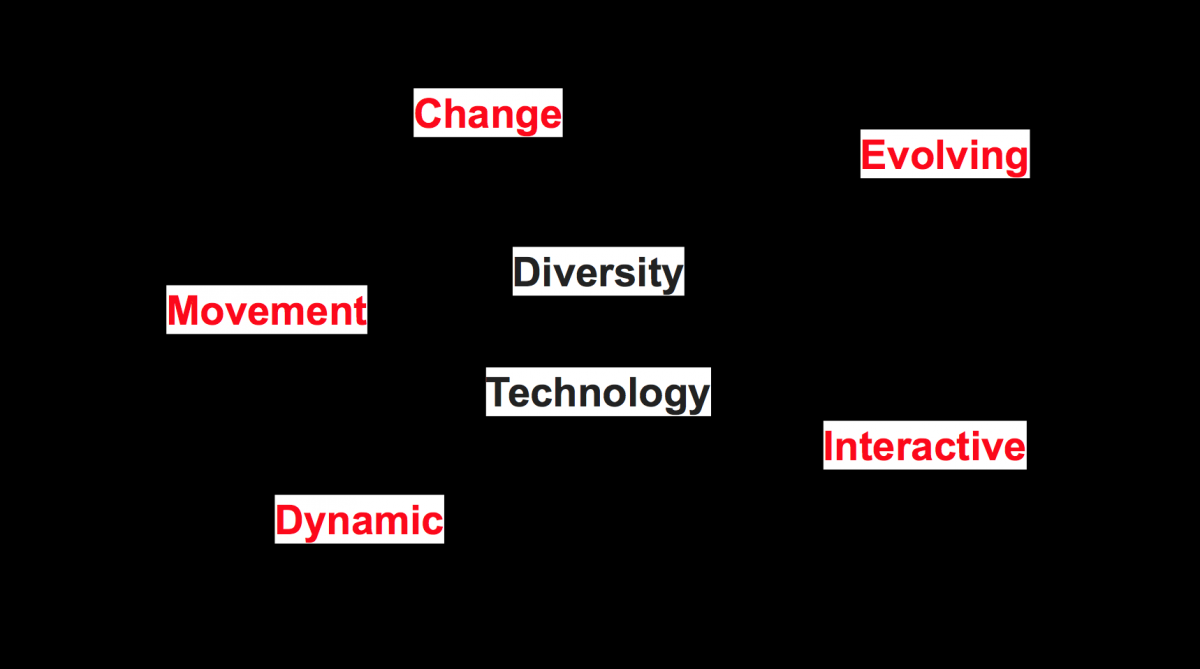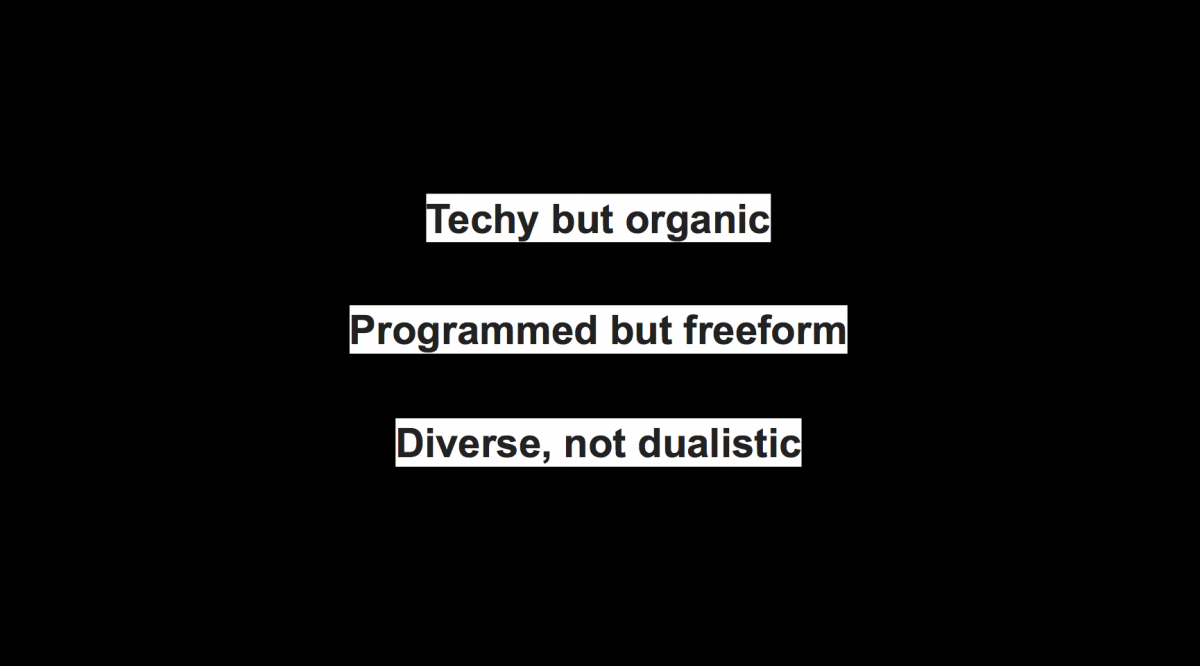One example of a project doing things differently was our Women in Tech Singapore branding project.
The assignment was to design a brand for Women in Tech that would represent the organisation and the event. The basic process is to figure out what attributes the brand represents and what is the essence of Women in Tech, a movement supporting diversity in technology. The brand assets would be distributed on all channels: event space, banners, posters, presentations and so forth, so while digital-first, this was NOT only branding for digital.
What the basic approach got us was these type of words and feelings:

Taken a tad further with the client project team figured that the following should also hold true:

And so we came up with the idea: what if brand would be code? What if the dynamic nature, diversity and techiness could come from algorithms? The idea of utilizing mathematic visualisations such as isosurfaces and metaballs emerged. The end result was an algorithm that produced dynamic brand visuals that kept on evolving, growing and moving. We thought this was perfect for Women in Tech and worked great when applied on different channels.
But, as always, the customer requested minor tweaks. The team tried to comply, but suddenly noticed we had created a black box of which we had no control over. Slight panic arose. We could not move forward, unless someone figured out how to control the Metaballs.
What were supposed to be minor tweaks ended up looking like this:

Even the slightest modifications to the inputs created major changes in the outcome that seemed random.
In the near future, this kind of design challenges will become more common. Designers will be dealing with AI systems that behave like black boxes. How do we tackle this? In our project, in the end we managed to add an interface to communicate with the algorithm. This added UI helped us to control the outcome, and the black box was no more.
Questions after the talk focused on the panic moments of the project – Would you do it again? How long did the project rough patch last? Was it worth it? Also the budget was of interest to participants – How much money was there to spend? How long was the project? Will these things be used again somewhere? And yes, there was good budget so that this could be done with good quality. Even with the two week period of “not so fun”, the team would certainly do it again and I would call it the most fun project of the year. And yes, the created dynamic branding will be used again in some format later on.
If you want to see the presentation, it is located here: https://youtu.be/G7Asorl9ssg
Slides from the event can be found on SlideShare.
